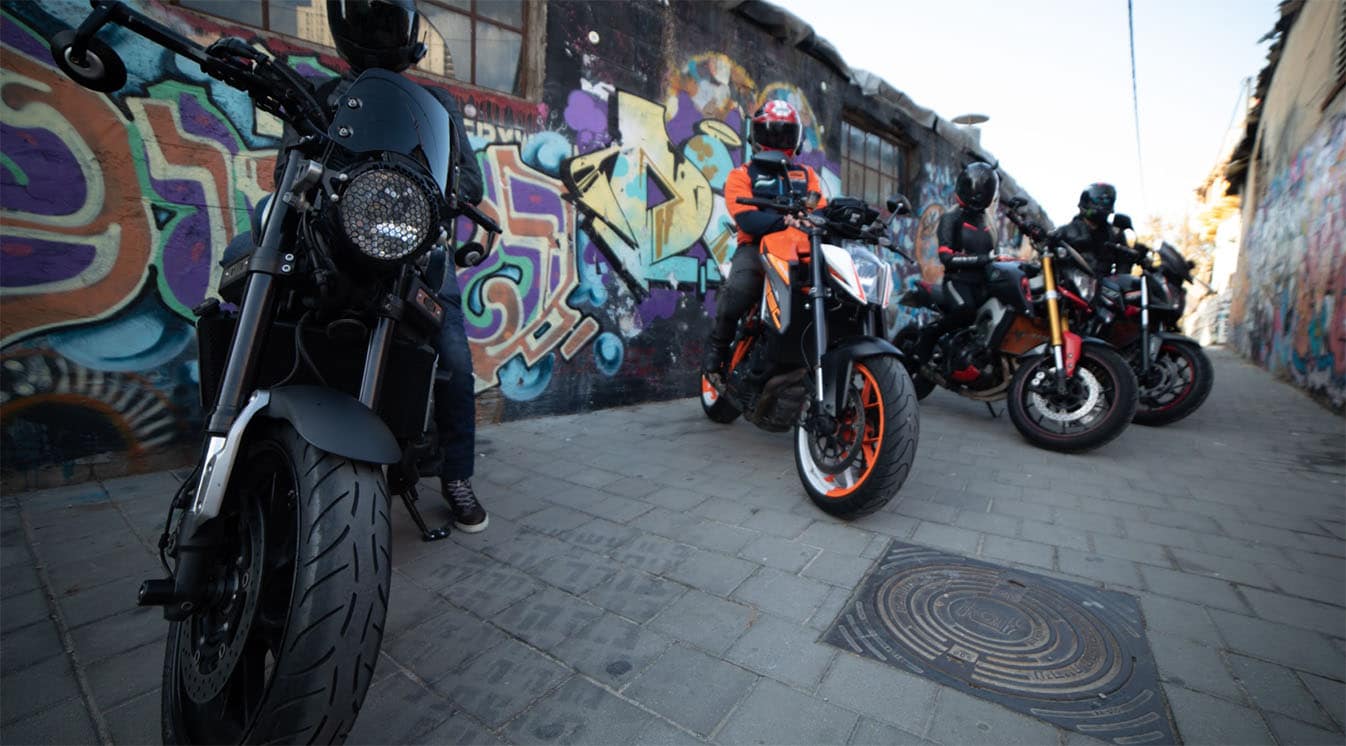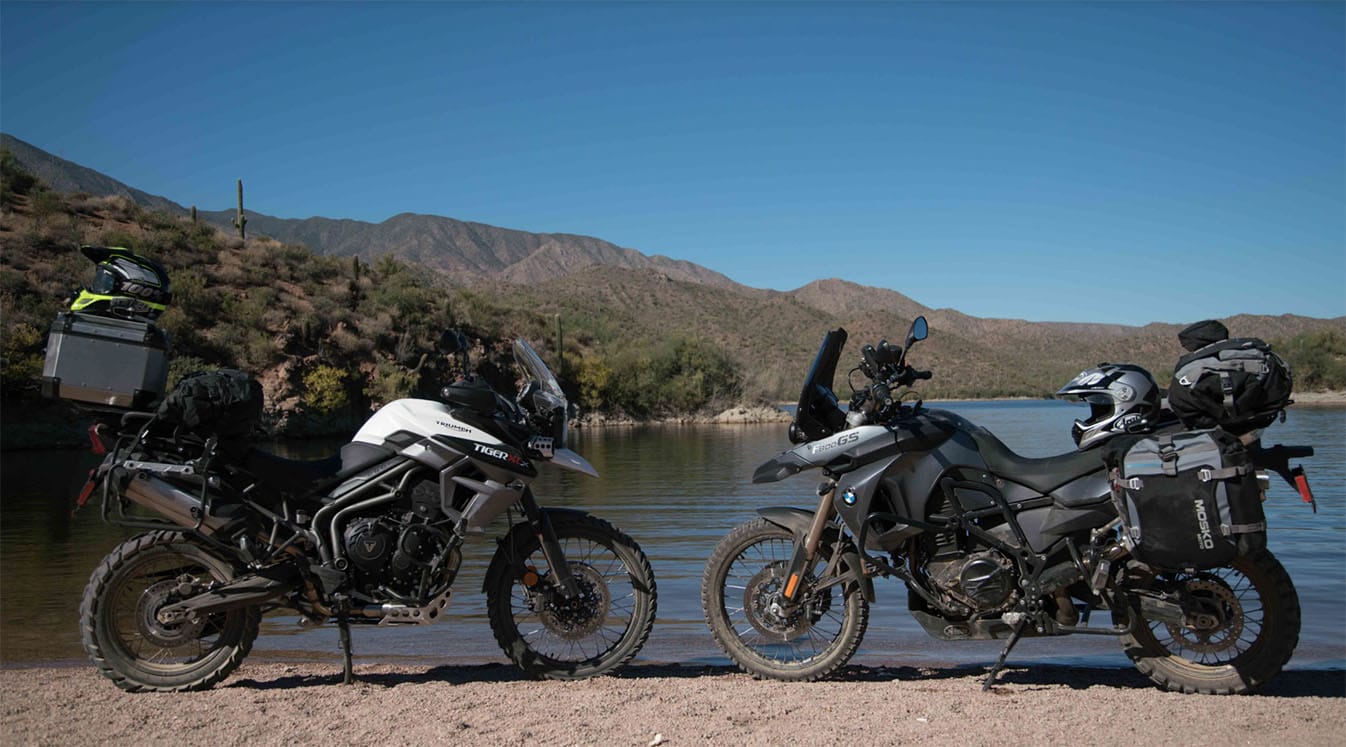Your motorcycle’s tires are among the most important parts of the bike. The size, tread and performance ratings of the tires on your bike will have a huge impact on how your bike handles. But to learn about what any given tire offers, you’ll first need to learn the art of how to read motorcycle tires.
See, if you look at any motorcycle tire, you’ll notice that there’s actually a lot of information printed on the tire itself. These are the size and performance ratings that you need to determine whether the tire is right for your motorcycle and riding style. So, what’s the secret behind how to read motorcycle tires? Below, we’ll cover all of the must-know basics.
1. Tire Size
First, you need to know how to determine if a tire is the correct size for your motorcycle. The size will be listed as part of a rating in one of three formats, which we’ll break down here:
Metric: The most common tire size rating system, used for everything from sport bikes to cruisers.
– Format Example: 180/55ZR-17
– 180: Width in millimeters
– 55: Aspect ratio (meaning that the tire’s cross-section height is 55 percent of its width)
– Z: Speed rating (see below)
– R: Radial vs. bias ply (see below)
– 17: Rim size in inches
Alphanumeric: Mostly used for touring bikes and heavy cruiser tires.
– Format Example: MU85B16
– MU: Each letter rating stands for a different size in inches and millimeters, which you can find on a motorcycle tire size conversion chart
– B: Radial vs. bias ply (see below)
– 16: Rim size in inches
Inches: An older and less common tire rating system that’s used mostly for vintage motorcycle tires, dirt bike tires and sidecar tires.
– Format Example: 5.00-16
– 5.00: Tire width in inches
– 16: Rim size in inches
Your owner’s manual will list the correct tire size for your motorcycle, although if you’ve installed aftermarket wheels on the bike, they may require a different tire size.
2. Radial vs. Bias Ply
The “B” or “R” in a standard metric or alphanumeric tire rating will tell you which of the two major tire types you’re looking at. Here’s the difference:
– Radial: The standard type of tire found on most sport bikes, cruisers, standards and other common motorcycles. Radial tires are constructed with steel bands inside that allow the tread and the sidewall to work independently, improving the tire’s flexibility and cornering ability. Radial tires will have an “R” in their size rating.
– Bias Ply: An older type of tire found mostly on heavy cruisers and touring motorcycles. Bias ply tires are made from multiple overlapping layers of rubber. They’re known for exceptional durability and weight rating, but they lack the agility of radials. Bias ply tires will have a “B” in their size rating.

Source: Antonio Guillem/Shutterstock
3. Tire Load Rating and Tire Speed Rating
You’ll also find a load rating and speed rating paired together on every motorcycle tire. The format will look like this–77H, where the number is the load rating and the letter is the speed rating.
As you can probably guess, a load rating tells you how much weight a tire is rated to bear safely, and a speed rating tells you the top speed that the tire can safely accommodate. These ratings are extremely important for a safe ride, and you should always check that the tires you’re putting on your bike (or the tires that it comes with when buying it) meet or exceed the combined weight of the bike and rider and the speeds at which you’ll be riding it.
Here’s how our example breaks down in practice:
– 77: Tire is rated to carry up to 908 lbs.
– H: Tire is rated for speeds up to 130 mph
See the complete list of motorcycle tire load and speed ratings to find out what your tires are rated for. Again, note that the manufacturer of your motorcycle and/or your wheels will provide a recommended load and speed rating that you should follow.
4. Recommended PSI
Before putting any set of tires on your bike, you need to find out what pressure level in pounds per square inch (PSI) a set of tires should be inflated to. Most tires will have a phrase like “Maintain (X) PSI” printed on them to tell you their maximum safe PSI.
Under some circumstances, such as when carrying a heavy load, you might want to run your tires at a slightly decreased pressure (although this can cause uneven and premature wear). But never inflate tires above their manufacturer’s recommended PSI rating. A tire pressure check should always be part of your standard pre-ride motorcycle inspection.

Source: YanaKotina/Shutterstock
Whether it’s tires or gear, you always want to come prepared with the right equipment when you’re getting ready to ride. Cardo Systems is the Powersports world’s leading innovator in motorcycle communication systems that let you chat with your riding group, take phone calls hands-free, stream media and GPS directions from your phone and so much more. And our motorcycle helmet speakers will blow you away with crystal clear sound quality, including JBL helmet speakers on the Cardo Packtalk Bold.





